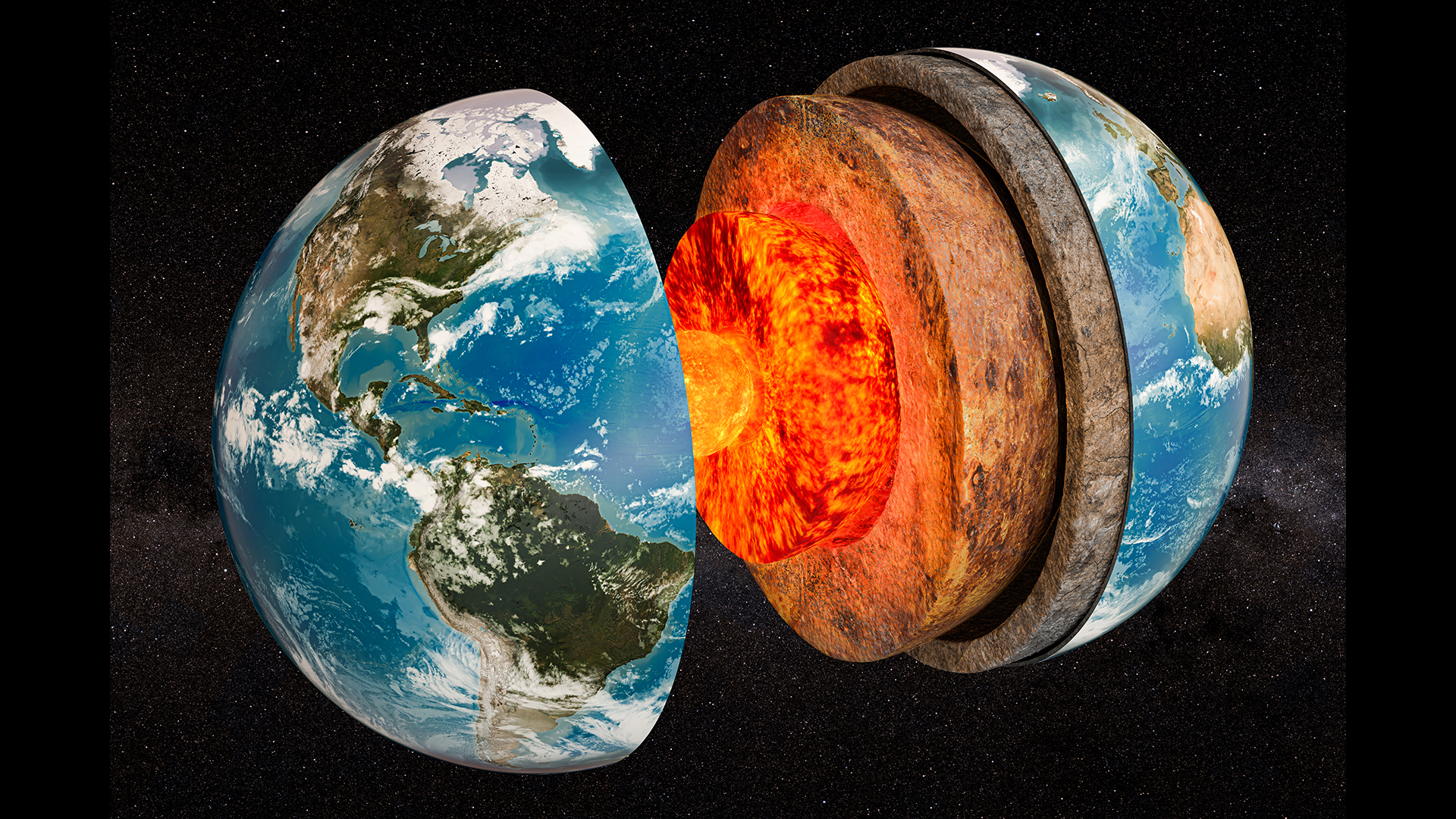How much water is in Earth's crust?
Earth is covered with water, but how much is hiding in our planet's crust?

Water covers nearly three-quarters of Earth's surface. But how much water lies hidden underground in the planet's crust?
A 2021 study in the journal Geophysical Research Letters found that more of Earth's water is held underground in the soil or in pores in rock — known as groundwater — than in Earth's ice caps and glaciers.
"There are approximately 43.9 million cubic kilometers [10.5 million cubic miles] of water in the Earth's crust," Grant Ferguson, a hydrogeologist at the University of Saskatchewan and lead author of the 2021 study, told Live Science.
Related: How much water is in Earth's atmosphere?
In comparison, ice in Antarctica holds about 6.5 million cubic miles (27 million cubic km) of water; in Greenland, about 720,000 cubic miles (3 million cubic km); and in glaciers outside of Antarctica and Greenland, 38,000 cubic miles (158,000 cubic km), the 2021 study noted.
Earth's oceans remain the planet's largest reservoir of water, holding about 312 million cubic miles (1.3 billion cubic km), according to the 2021 study. Still, aside from the oceans, groundwater is the largest reservoir of water globally, the study noted.
A 2015 study in the journal Nature Geoscience had estimated there were 5.4 million cubic miles (22.6 million cubic km) of shallow groundwater — water in the upper 1.2 miles (2 kilometers) of Earth's crust. In contrast, the 2021 study considered groundwater within the upper 6.2 miles (10 km) of Earth's crust, Ferguson said.
Get the world’s most fascinating discoveries delivered straight to your inbox.
This discrepancy was due to how previous estimates of deep groundwater — that below the upper 1.2 miles of Earth's crust — focused only on crystalline rocks with low porosity, such as granite. The 2021 study included sedimentary rocks, which are more porous than crystalline rocks.
All in all, the 2021 study more than doubled the amount of groundwater thought to exist 1.2 to 6.2 miles beneath Earth's surface — from about 2 million cubic miles (8.5 million cubic km) to 4.9 million cubic miles (20.3 million cubic km). This new estimate is nearly as large as the 5.7 million cubic miles (23.6 million cubic km) they calculated for shallow groundwater.
Ferguson noted that the crust is typically 19 to 31 miles (30 to 50 km) thick — significantly thicker than the 6.2-mile depth the 2021 study considered. They focused on the upper crust because it is relatively brittle and so possesses fractured rock that can, in turn, hold water. Below about 6.2 miles, the crust becomes much less porous and likely to contain water, he said.
Shallow aquifers of groundwater, which are mostly fresh water, are used for drinking and irrigation. In contrast, deep groundwater is salty and cannot easily circulate or flow to the surface, largely cutting it off from the rest of the planet's water, Ferguson noted.
However, the relative isolation of deep groundwater means that, in some places, this brine has been trapped for extraordinarily long spans of time. This means it could offer valuable insight into Earth's past, the 2021 study noted.
"We know very little about these waters at depths greater than a few kilometers, making it a frontier area for science," Ferguson said.
In addition, these ancient waters may support microbial ecosystems that are still active today. Such deep biological communities may shed light on how life evolved on our planet and how it might develop on other worlds that likely host water deep beneath their surfaces.
"There's so much more to explore about water at kilometers' depth on Earth and other planets," Jennifer McIntosh, a hydrogeochemist at the University of Arizona in Tucson and co-author of the 2021 study, told Live Science.




